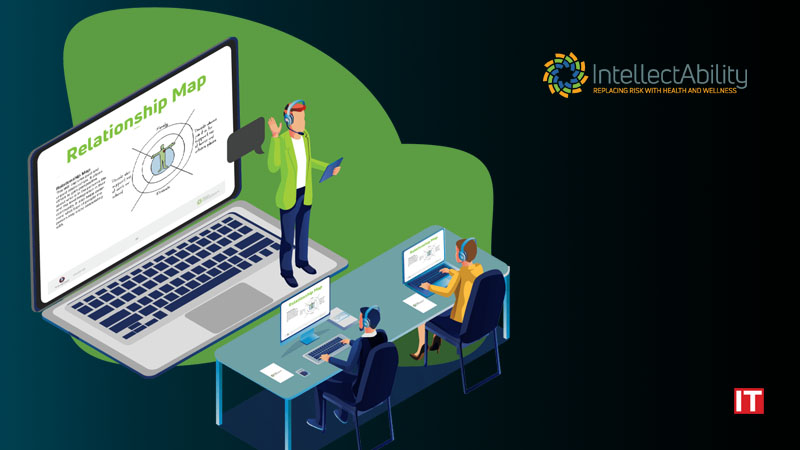COVID-19, social distancing, and stay-at-home protocols have exposed a major challenge in diagnosis and remote treatment of individuals with Intellectual and Developmental Disabilities (IDD). According to Health Risk Screening, Inc.’s President Dr. Craig Escudé, as telehealth becomes one of the most-often used methods of diagnosis and treating patients in the pandemic era, the training and education of clinicians is critical to the success of the patients’ outcome. This is true now more than ever as it relates to patients with IDD.
The implementation of telehealth and e-learning solutions would be paramount for all caregivers. “Healthcare professionals and caregivers are enormously disadvantaged in providing care for those with IDD during COVID-19,” Dr. Escudé says. “E-learning tools are crucial to providing accurate diagnostic support to healthcare workers. Early intervention saves lives of people with IDD in home and facility settings.”
Read More: Athena Software Releases New and Enhanced Electronic Health Documentation Feature
Not all physicians who provide healthcare through telehealth possess the specialized training to work with IDD patients for accurate diagnoses. New York area Emergency Department Director Dr. Mathew Kaufman understands the challenges and has become part of the solution through his telemedicine company StationMD. ER physicians clearly see the need for prevention and care practices that keep vulnerable patient groups like those with IDD out of the ER. Direct Support Professionals (DSP) are in the best position to “observe, record, and report” signs and symptoms that may indicate changes of health status. The challenge is that both DSPs and ER physicians lack training in identifying and treating health issues in people with IDD.
“The availability of e-learning in this specialty area of medicine enables remote physicians to diagnose, isolate, and set up treatment protocols of COVID-19 positive IDD patients within the facility,” Dr. Kauffman explained. “This kind of training equips our staff with the ability to determine the severity of the medical problem, what to do about it, and if they should be transported to the ER.”
A major complicating condition is pneumonia. In fact, aspiration pneumonia is considered one of “The Fatal Five” preventable causes of death in people with IDD. Statistics show that patients with IDD suffer death from pneumonia at two to five times the rate of those without IDD. That’s according to a data-backed research brief recently posted by Syracuse University’s Lerner Center for Public Health.(1) This not only shows the outsized danger of COVID-19 to individuals with IDD but points to a lack of diagnostic support for this group(2).
Education and training is critical to avoiding unnecessary suffering by people with IDD, and having access to e-learning tools, such as HRS’s Curriculum in IDD Healthcare, could support physicians in helping clinicians meet that diagnostic objective for these vulnerable patients. The use of e-learning tools has been shown to reduce ER visits by 41 percent when used by DSPs working with vulnerable populations in a group of more than 6,000 California home care workers.(4)
HRS’s e-learning tools provided significant background and education to StationMD personnel helping patients with IDD to avoid unnecessary trips to the ER. HRS’s Curriculum in IDD Healthcare eLearn course can have a profound impact on helping clinicians by arming them with the fundamentals they need to provide healthcare for people with IDD. The Curriculum has already proven to be an important new e-learning solution for medical student training and use by ER physician groups, just as it did for StationMD.
This tool is part of a broader metric-backed understanding that e-learning tools have proven to be equally or more effective than traditional teaching methods.(5) As life in general and medicine specifically become more digitized, having easily accessible tools and training will not only save the lives of patients with clinical complexities, but the population at large as well. This effectiveness is mirrored in telehealth interventions that combine E-learning as part of an evidenced-based, person centered services approach for healthcare teams. (6)(7)(8)
According to Dr. Escudé, it is these types of innovations between telehealth and e-learning to better diagnose IDD patients that will be necessary to deal with an increasing remote healthcare diagnostic age. Dr. Escudé says. “It will take a combination of education and increased access to trained clinicians to play a major part in stemming mortality rates as we move forward.”
About Health Risk Screening, Inc.:
Health Risk Screening, Inc.’s roots began in 1992. HRS is an industry leader in training courses, webinars, and materials to help at-risk populations. HRS’s focus is on developing tools and training for the person-centered support of these vulnerable populations. Through the education of government agencies and service providers, HRS aims to improve lives. One such tool is the Health Risk Screening Tool, of which HRS is the sole developer, producer, and distributor. The web-based HRST is the most widely used and validated health risk screening instrument for people with intellectual and developmental disabilities. With unrelenting focus, HRS works to fulfill its mission of improving the health and quality of life for people faced with these types of vulnerabilities. For more information, visit http://www.hrstonline.com.
1. Dalton Stevens. “Potential Impacts of COVID-19 on Individuals with Intellectual and Developmental Disability: A Call for Accurate Cause of Death Reporting,” Lerner Center,
April 14, 2020, lernercenter.syr.edu/2020/04/14/potential-impacts-of-covid-19-on-individuals-with-intellectual-and-developmental-disability-a-call-for-accurate-cause-of-death-reporting/
2. Michelle Diament. COVID-19 Cases at Group Homes, Institutions Going Untracked, May 11, 2020, disabilityscoop.com/2020/05/11/covid-19-cases-at-group-homes-institutions-going-untracked/28313/
3. Retooling for an Aging America Building the Health Care Workforce, NCBI Books, 2008, ncbi.nlm.nih.gov/books/NBK215401/
4. Kezia Scales. “Leveraging Technology to Support—Not Supplant—The Home Care Workforce,” Health Affairs, August 7, 2019, healthaffairs.org/do/10.1377/hblog20190805.54553/full/
5. “E Learning as good as traditional training for health professionals: where is the evidence? WHO, 2015, who.int/hrh/news/2015/e_learning_4_hrh/en/
6. Totten AM, et al. AHRQ comparative effectiveness technical briefs, in telehealth: mapping the evidence for patient outcomes from systematic reviews. Rockville: Agency for Healthcare Research and Quality, June 2016, effectivehealthcare.ahrq.gov/sites/default/files/pdf/telehealth_technical-brief.pdf
7. de la Torre-Diez I, et al. Cost-utility and cost-effectiveness studies of telemedicine, electronic, and mobile health systems in the literature: a systematic review. Telemed J E Health. 2015;21(2):81–5, Mary Ann Liebert Publishers, January 2015, liebertpub.com/doi/abs/10.1089/tmj.2014.0053
8. Winifred V. Quinn Ellen O’Brien Gregg Springan. ‘Using Telehealth to Improve Home-Based Care for Older Adults and Family Caregivers,” Advancing States, May 2018, advancingstates.org/sites/nasuad/files/using-telehealth-to-improve-home-based-care-for-older-adults-and-family-caregivers.pdf


































Leave a Reply